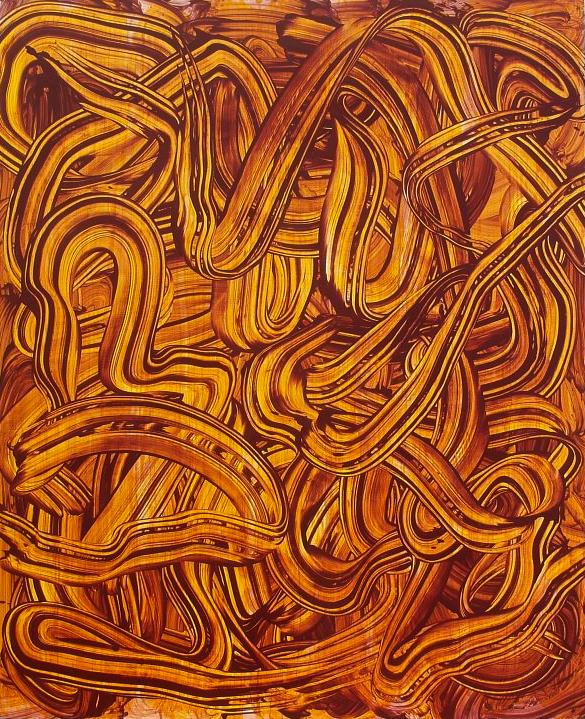Auckland Art Gallery News, November 2004–February 2005.
‘The golden age of abstract expressionism is long gone, but that doesn’t prevent the gestural from making its claim. For many artists, gesture is no longer embedded in the same pictorial and referential structures from which it drew its original authority. Rather than being the basis for a dynamic compositional system or a clearly labelled marker of the psyche, it has become increasingly autonomous.’ So writes American critic Richard Kalina. In New Zealand art, no one exemplifies this thought better than Judy Millar. Millar paints on the floor. Paint is applied to the canvas then swept around by hand using big wrist and arm movements. Removing paint in the process, Millar calls it ‘painting backwards’. Her gestures cut across their own tails, creating loopy sprung forms that seem to hang in exaggerated illusionistic space as frozen gesture trails. Hysterical, hyperactive, perky, Millar’s lines bump around the picture space often recalling the way fights are depicted in comics as clouds of graphic swirls, so-called ‘action lines’. Millar explores a gamut of possibilities: speed, rhythm, and incident, compression and expansion, muscularity and dazzle, not to mention representational associations. While her paintings emphasise the hand, they also seem slick and quotational, mediated and conventional, like Roy Lichtenstein’s comicbook brushstrokes or Gerhard Richter’s mannered paint drags. So, while they are assertively handmade, Millar’s action-packed images also feel oddly distant and photographic. But if Millar acknowledges the recent critique of expressionist immediacy, her flamboyant works refuse to be burdened by it. Their sprightly lines and party colours pull the carpet on a classic brand of existential inquiry, making room for new questions. Millar has taken an old-fashioned, even derided idea—action painting—and is breathing new life into it.
.
[IMAGE: Judy Millar Things Get Worse 2003]
